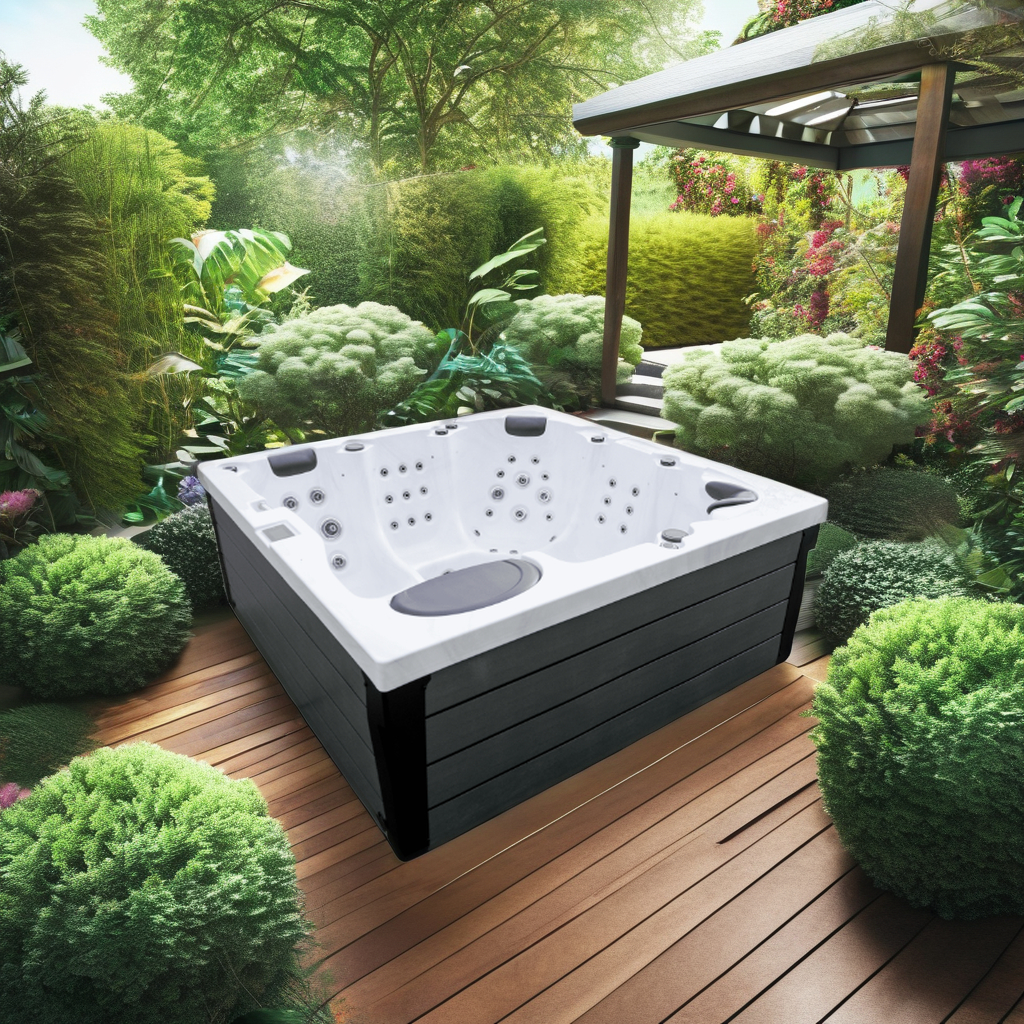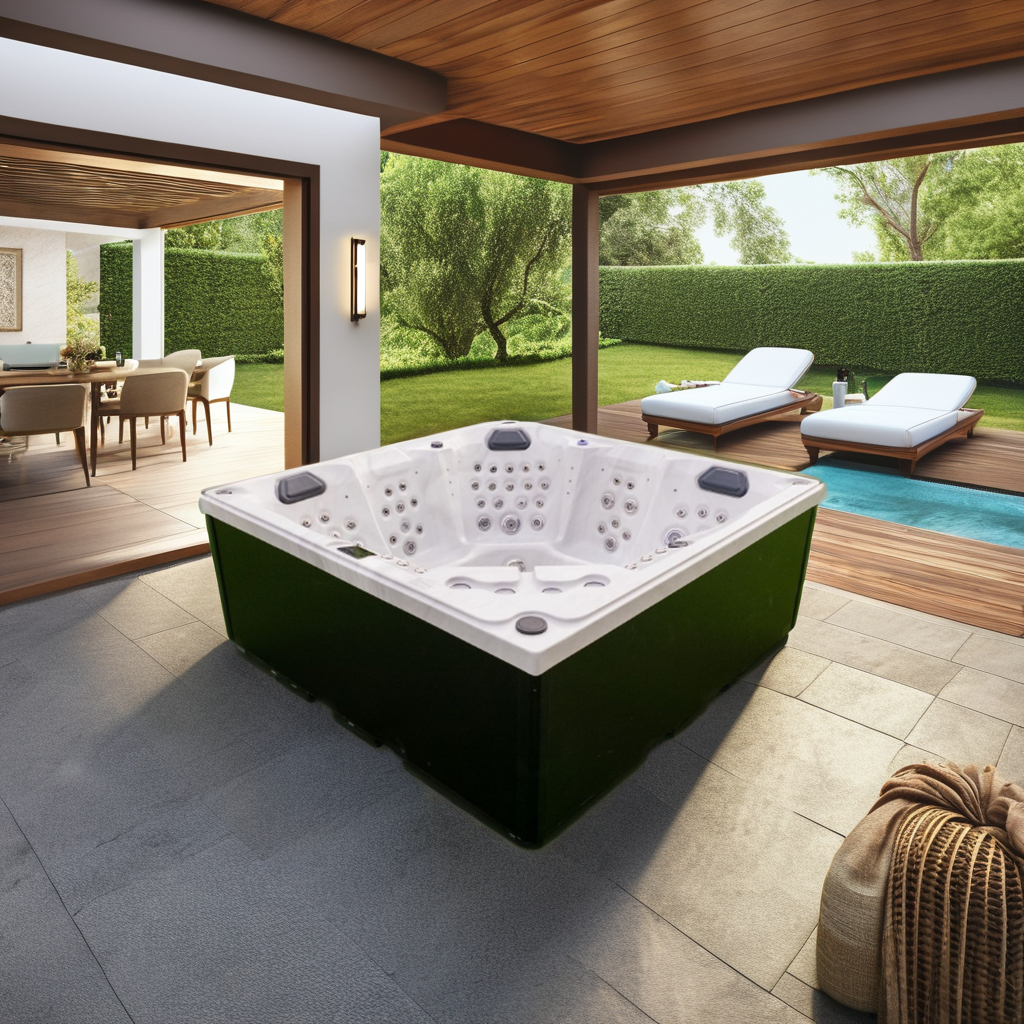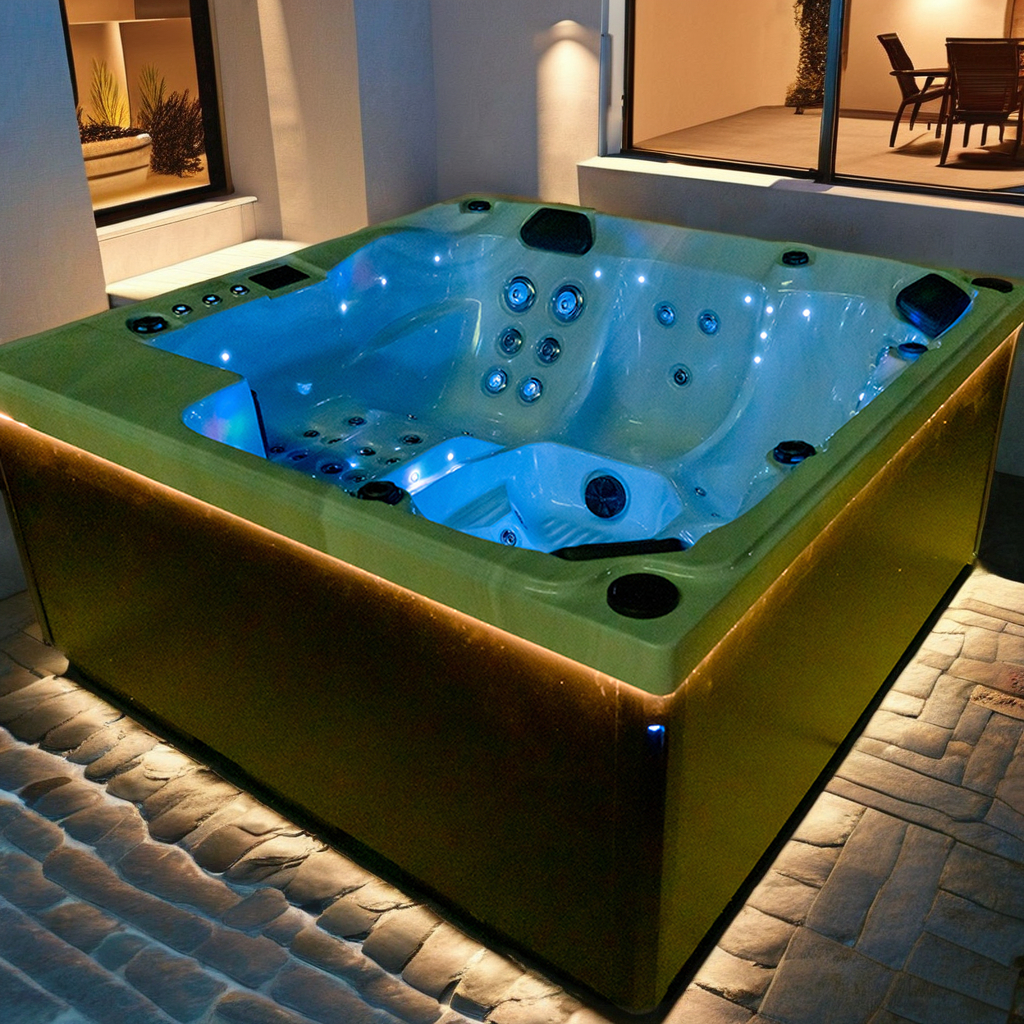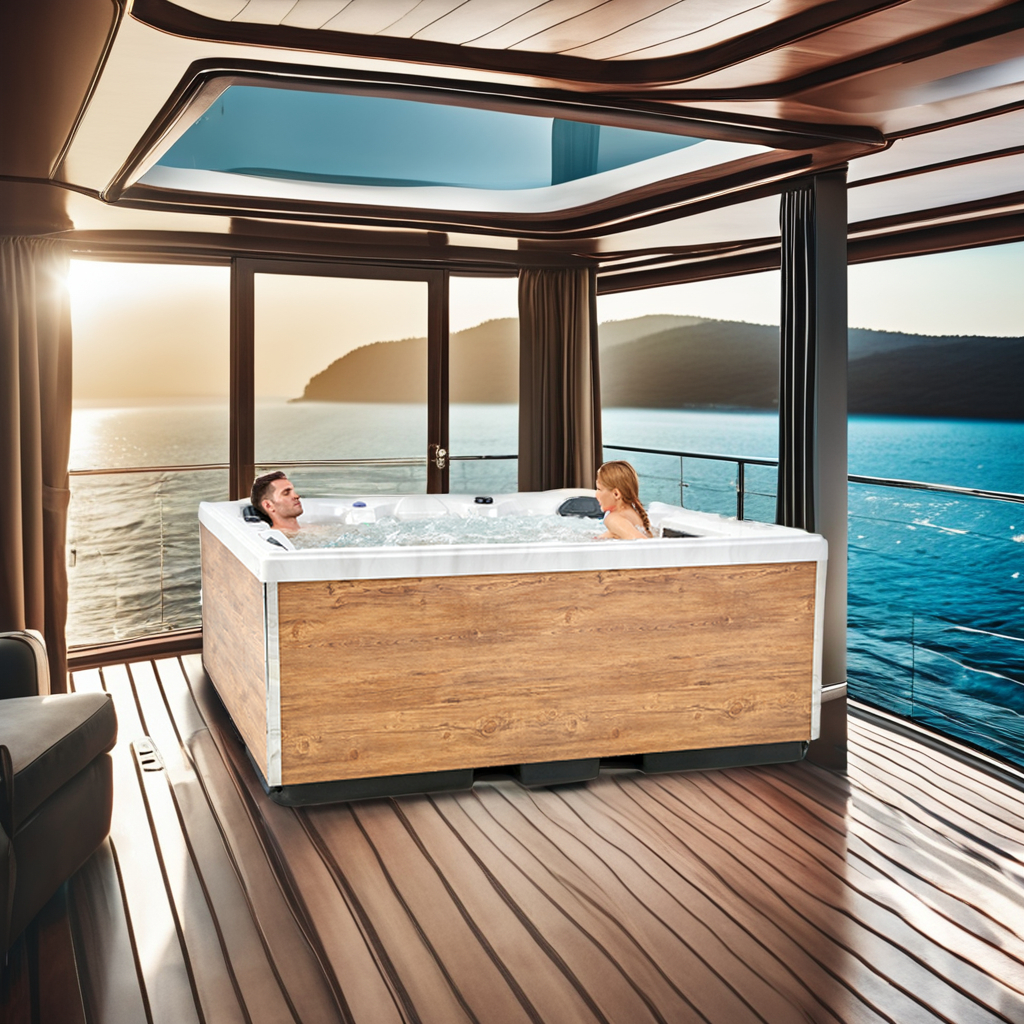
Why does my acrylic spa tub keep cracking?
2025-10-22 15:30Acrylic spa tubs are popular in modern bathrooms for their sleek appearance, excellent thermal insulation, and relatively affordable price. However, many users find their acrylic spa tubs repeatedly cracking over time. Even after repairs or replacements, new cracks often reappear, affecting the user experience and potentially causing serious problems such as leaks and structural damage.
So, why do acrylic spa tubs keep cracking? This article will comprehensively analyze various aspects, including material structure, installation methods, usage habits, environmental conditions, and design flaws. It will also provide professional advice on how to avoid cracking and help users understand this common problem scientifically.

The Structure and Characteristics of Acrylic Spa Tubs
To understand the causes of cracking, it's important to first understand the basic structure and material properties of acrylic spa tubs.
1.1 Surface Material: Acrylic Sheet (PMMA)
· Made of polymethyl methacrylate;
· Advantages: Lightweight, strong formability, smooth surface, corrosion resistance;
· Disadvantages: Average impact resistance, low hardness, and easy deformation under high temperatures or external forces.
1.2 Bottom and Support Structure
· Mostly made of fiberglass reinforced plastic (FRP) or polyurethane foam;
· Provides support, anchoring, and load-bearing functions.
This structure directly affects whether the acrylic spa tub can evenly distribute stress during use, preventing localized pressure that can lead to cracking.

Ten Core Reasons Why Acrylic Spa Tubs Frequently Crack
2.1 Improper Installation Leads to Structural Stress Concentration
Improper installation is one of the primary factors that lead to repeated cracking in acrylic spa tubs:
· The bottom of the tub is not fully in contact with the ground, resulting in uneven stress concentration in the suspended area;
· Failure to use appropriate foam fillers or support frames;
· Failure to account for minor unevenness in the wall or floor tiles during installation, leading to abnormal pressure points in the tub.
In this state, the acrylic surface or base is susceptible to microcracks under water pressure or human weight, which can expand into visible cracks over time.
2.2 Insufficient Acrylic Material Thickness
Some low-quality or low-priced acrylic spa bathtubs are manufactured with insufficiently thick acrylic sheets (e.g., less than 3mm) to reduce costs:
· Thin sheets have poor compressive strength;
· They are more susceptible to structural fatigue cracking due to thermal expansion and contraction;
· They cannot effectively buffer water flow or body pressure.
After long-term use, these bathtubs are prone to cracking in areas of concentrated stress, such as the center of the base and the backrest.
2.3 Fatigue Cracks Caused by Thermal Expansion and Contraction
Acrylic is a thermoplastic material and is significantly affected by temperature fluctuations. Typical situations include:
· Rapid cooling after high-temperature filling or use in low-temperature environments;
· Frequent activation of the spa function and repeated activation of the heating system;
· Thermal stress concentration, particularly the formation of internal stress differences between the surface and inner layers.
If the bathtub structure lacks sufficient expansion space or the rims are improperly finished, microcracks are prone to repeated thermal expansion and contraction.
2.4 Overloading and Structural Instability
Although acrylic spa bathtubs are structurally sturdy, each product has a specific load capacity:
· Frequent use of more than two or even three people;
· Users jumping or exercising vigorously in the bathtub;
· Using excessive water volume exceeding the overflow level;
These situations can cause critical bending or stress tears in the bottom.
The area around the nozzle assembly is particularly vulnerable and prone to cracks.
2.5 Improper Cleaning Methods Can Weaken the Surface
Some users use the following cleaning methods on acrylic spa bathtubs, which can cause long-term damage:
· Using metal brushes or steel wool;
· Using highly corrosive cleaners containing alcohol, chlorine, or acids and alkalis;
· Rubbing with a hard cloth when dry.
These methods can damage the surface coating or even directly scratch the acrylic, making it brittle and prone to cracking.
2.6 Improper Installation Location and Environment
Some users place their acrylic spa bathtubs in unsuitable locations such as:
· Outdoor areas exposed to direct sunlight;
· Semi-open spaces with high humidity year-round;
· Floors with unstable foundations or sunken floors.
Ultraviolet rays from sunlight accelerate the aging of acrylic, while moisture and unstable floor structures can create uneven stress in small areas, ultimately leading to cracks.
2.7 Design Flaw: Improper Nozzle Distribution
The nozzles in acrylic spa bathtubs are often installed by drilling holes. This can be problematic if:
· The nozzle holes are too dense or too large;
· Metal rings are not installed for reinforcement;
· The nozzle seals are loose or leaking;
These areas are prone to cracks due to frequent use. High-end bathtubs feature special reinforcement in these areas, while lower-quality products often overlook this issue.
2.8 Material Defects During Manufacturing
If the acrylic layer develops the following during production:
· Uneven heating temperature;
· Excessively rapid cooling;
· Microbubbles within the vacuum forming process;
These hidden defects may not be noticeable initially, but after a period of use, they can easily lead to structural cracking, known as "delayed fatigue cracking."
2.9 Expiration of Service Life
Even high-quality acrylic spa tubs have a normal service life:
· Typically 8 to 15 years;
· Long-term exposure to high temperature, high pressure, or frequent use;
· Aging of the acrylic's molecular chain structure, resulting in reduced toughness.
This type of cracking caused by natural aging is irreversible, and repair is not recommended.
2.10 Secondary Cracks Caused by Improper After-Sales Repair
Many users attempt to repair cracks themselves after the initial appearance of the cracks:
· Using general-purpose plastic glue;
· Applying glue without sanding;
· Adhesive incompatibility with acrylic;
· Imbalanced surface tension distribution.
This "wrong repair" behavior will further propagate cracks and even form more micro-cracks.

How to prevent frequent cracking in acrylic spa tubs?
To prevent your acrylic spa tub from cracking again, consider the following:
3.1 Always check the flatness of the foundation before installation
· Ensure the ground is level and free of sinking.
· Use foam support padding to fill the bottom.
· Use flexible sealant around the edges to cushion external forces.
3.2 Choose a bathtub made of thick material and good craftsmanship
· It is recommended to choose an acrylic layer at least 4mm thick.
· Inspect the surface finish for bubbles or discoloration.
· Choose a brand of bathtub with a structural warranty.
3.3 Properly control the number of users and water level
· Limit the number of users according to the user manual.
· Keep the water level below the safety line.
· Avoid violent impacts on the bathtub walls during use.
3.4 Properly control the water temperature and frequency of use
· Avoid frequent alternation between hot and cold water.
· Limit each session to no more than 30-45 minutes.
· Regularly drain the bathtub to allow it to dry.
3.5 Use a neutral detergent for daily cleaning
· Wipe weekly with a soft cloth and neutral soap.
· Avoid using alcohol, bleach, citric acid, etc.;
· Keep dry after cleaning.
3.6 Regularly inspect joints, nozzles, and bases for leaks or looseness
· Promptly repairing minor problems can effectively prevent cracks from expanding.

What types of spas and hot tubs can I buy from LOVIA SPA?
LOVIA SPA manufactures a wide variety of spa products, including outdoor spas, swim spas, massage tubs, and hot tubs suitable for homes, hotels, wellness centers, and commercial projects. Buyers can request custom designs, special features, and different sizes to match their requirements.
As a factory supplier, LOVIA SPA offers competitive prices for wholesale and bulk purchasing, along with promotions, discounts, and factory quotes. All our products are certified with CE, ETL, SAA, ROHS, REACH, and ISO9001, guaranteeing safety, durability, and superior performance.
